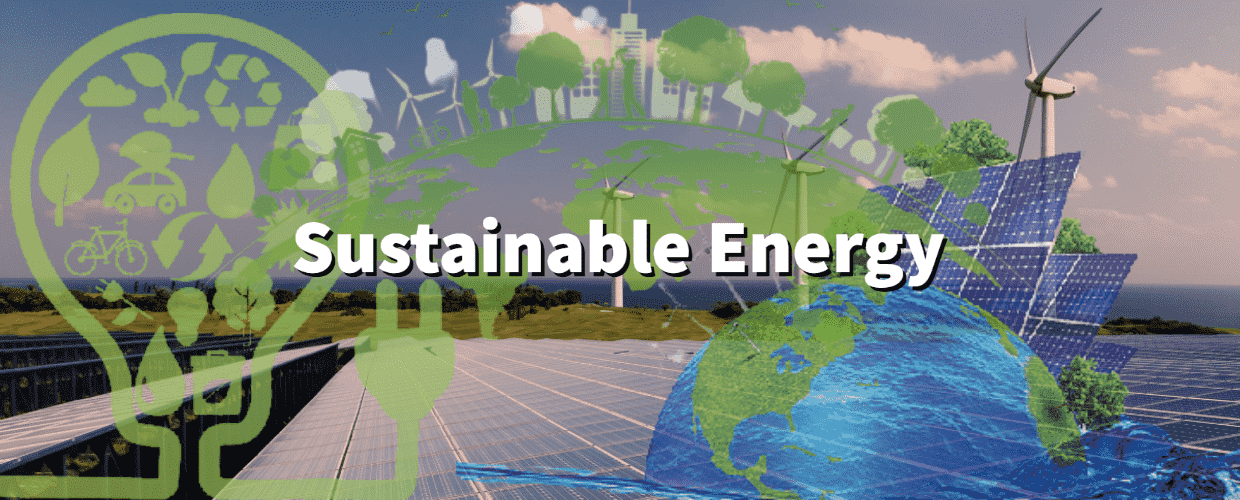Sustainable energy has become widely popular and is being produced worldwide. With the proper use of this energy, the country’s economic development is also taking place. Popular sustainable energy includes wind, solar, hydropower, geothermal, and bioenergy.
This article discusses sustainable energy, its popular categories, importance, and market value.
What is Sustainable Energy?
Sustainable energy is an energy that has no destruction. There is no destruction of energy, but it can convert from one energy to another. So, while converting energy, it should be carefully reviewed how sustainable or long-term the energy produced will be. Otherwise, if the energy produced for human welfare becomes useless before it is used, it will waste only money.
The impacts of climate change are increasing, for which sustainability has become necessary. Sustainable energy practices can help us build a renewable future and solve major energy crises for future generations.
“Energy is essential for development, and sustainable energy is essential for sustainable development.” — Tim Wirth
Categories of Sustainable Energy
Popular sustainable energy includes:
- Wind Energy
- Solar Energy
- Hydropower
- Geothermal Energy, and
- Bioenergy
Variations in the atmosphere are caused by uneven heating from the sun to the atmosphere. Rivers, mountains, and plants all move due to wind. And harnessing this wind energy, wind turbines convert wind energy into electrical energy by rotating a blade around a rotor. An electric generator with a rotor turns the drive shaft to produce electricity.
Sun energy is the term for solar radiation that may create heat, trigger chemical processes, or produce electricity. The total solar energy incidence on Earth is much more than the global energy needs now and in the future. This widely distributed source can meet all future energy demands if adequately exploited. Due to its limitless supply and lack of pollution, solar energy is predicted to become a more appealing renewable energy source in the twenty-first century than the limited fossil fuels coal, petroleum, and natural gas.
The term Hydropower or “hydroelectric power” refers to electricity generated by turbines that use the potential energy of falling or swiftly flowing water to power generators. Water is gathered or stored at a higher height during hydroelectric power production and then transported via concrete pipes or tunnels (penstocks) to a lower level; the difference between these two elevations is referred to as the head. The falling water turns turbines as it nears the bottom of the pipelines. In turn, the turbines power generators, which transfer the turbines’ mechanical energy into electricity. Transformers then transform the alternating voltage suited for the generators into a greater voltage suitable for long-distance transmission. The powerhouse is the building, which contains the turbines and generators and the pipelines or penstocks that feed into it.
The heat generated at the Earth’s core is known as geothermal energy. This process may use geothermal energy to create heat and power, and it is a clean, sustainable resource. Geothermal energy is heat produced by Earth.
The heat created deep inside the Earth’s core is known as geothermal energy. It is possible to utilize geothermal energy to generate heat and power, and it is a clean, sustainable resource. The heat produced by the Earth’s interior is known as geothermal energy.
Why is Sustainable Energy Important?
The World Health Organization estimates that limiting global warming to 1.5 degrees Celsius could save millions of lives annually by reducing air pollution. Therefore, renewable energy is being developed with the aim of sustainable energy generation to reduce global warming.
It is possible to produce sustainable energy by properly renewing environmentally harmful carbon, carbon dioxide, or other global warming-responsible materials from factory waste, cars, or oil-powered machines. As a result of using this energy, our way of life will improve now and in the future; it is a blessing.
“Clearly, we need more incentives to quickly increase the use of wind and solar power; they will cut costs, increase our energy independence and our national security and reduce the consequences of global warming.” —Hillary Rodham Clinton
Global Renewable Energy Market Value
According to Grand View Research, the global renewable energy market value was USD 768.9 billion in 2021. It is projected to grow at a compound annual growth rate (CAGR) of 16.6% from 2022 to 2030, the historical period from 2019 to 2020 [1].
The shift toward low-carbon fuels and stringent environmental regulations in most developed countries have greatly boosted the renewable energy sector. The energy generation market has witnessed growth in the installed capacity of renewable sources in the past few years because of the growing environmental concerns coupled with the pressure to reduce the harmful effects of Greenhouse Gasses (GHG). It has been a major factor in expanding solar and wind energy sectors.












